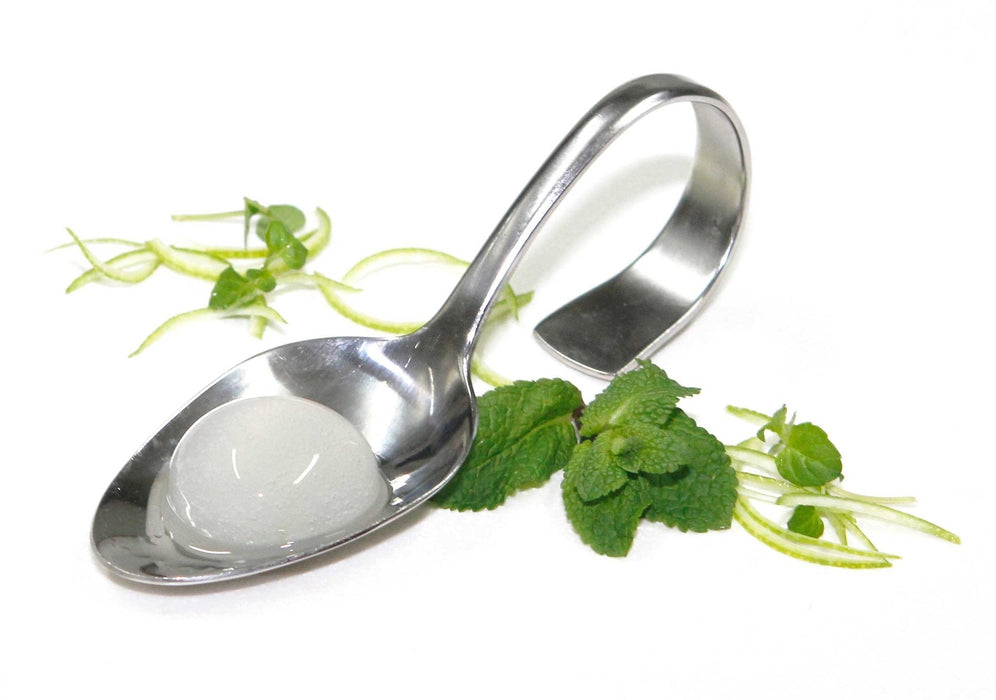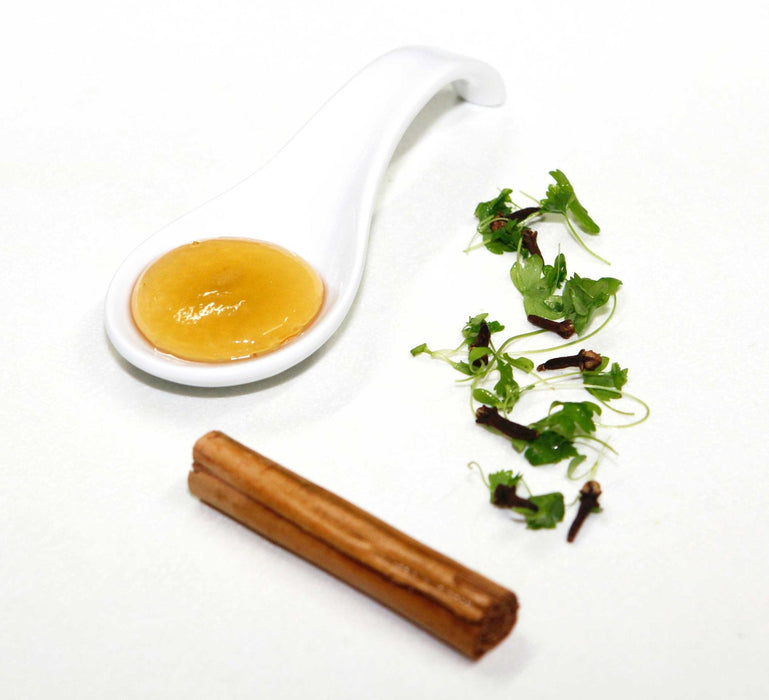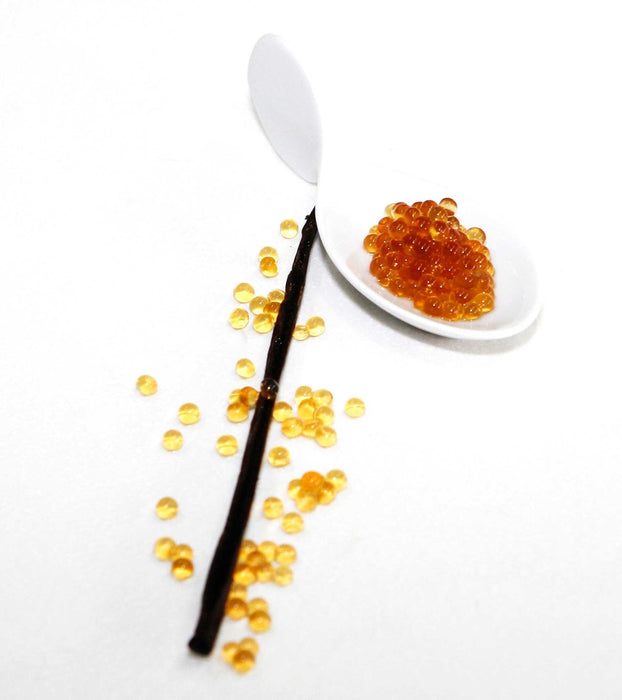100g of calcium lactate and 100g of sodium alginate are both the ingredients needed for basic spherification and reverse spherification.
Calcium lactate
Our Calcium Lactate is a premium product and is an extract of lactic acid. It works well in the production of caviar, pearls, spaghetti and spheres using spherification techniques. Calcium Lactate can also be added to fresh fruit and melons to keep them firm and extend their shelf life. Calcium Lactate provides calcium salts in a soluble form to react with alginate, gellan or some types of carrageenan allowing gel formation without heating. Its taste is more subtle than calcium chloride (salty and sometimes bitter). Calcium Lactate is recommended in all reverse spherification reactions and reacts where the alginate and calcium source are intimately mixed, such as in diffused environment or full contact gelation. Calcium Lactate also works well in the production of drops, caviar pearls and all forms of spaghetti by immersing the alginate solution in a calcium bath.
- Use in spherification and reverse spherification techniques
- Coating fruits and vegetables to extend their shelf life
- A source of calcium
How to use:
Use 1 to 9% calcium lactate to supply calcium ions in a hydrocolloid setting bath that reacts with calcium ions such as sodium alginate, gellan gum, iota carrageenan, kappa carrageenan, and pectin.
This grade is recommended for all applications where the calcium salt will be easily mixed with other ingredients and consumed (diffusion setting, mixing alginate with calcium rich solutions). For these applications it is used at 1%. It can be used as a source of calcium fortification. Solubility limits: 10 g per 100 ml.
Storage conditions: Store in a cool, dry place away from direct sunlight. Use within 6 months of opening.
Ingredients: Calcium lactate (E327).
Dietary information: Suitable for vegans and vegetarians, non-GMO, gluten-free, kosher friendly, halal friendly.
Sodium alginate
Sodium alginate is an extract of seaweed, used by molecular chefs for the spherification process. It forms a gel in the presence of calcium ions. Sodium Alginate is a gelling agent that dilutes in the cold with strong agitation. It can be used to create soft, compact, resistant to the environment and heat gels and to produce foams. Sodium alginate is also commonly used as a thickener, emulsifier and texture improver.
- Use in spherification and reverse spherification
- Improve the plot
- It can be used to thicken solutions and liquids
- Creates soft or compact heat-resistant gels
How to use:
For spherification use 1% sodium alginate by weight of liquid. To disperse, add it while stirring the liquid vigorously or mix with another dry ingredient (such as sugar) before adding to the liquid.Since the powder begins to gel in the presence of calcium, do not attempt to use it in a liquid with a high calcium content, such as milk. To make the process easier, use low-calcium bottled water. Add the powder to the liquid or puree and use a syringe to squeeze the droplets into a calcium bath, where they transform into caviar pearls. Swap the two ingredients for reverse spherification (using sodium alginate for the water bath).
Storage conditions: Store in a cool, dry place away from direct sunlight. Shelf life 2 years. Use within 6 months of opening.
Ingredients: Sodium alginate (E401).
Dietary information: Suitable for vegans and vegetarians, non-GMO, gluten-free, halal friendly.







